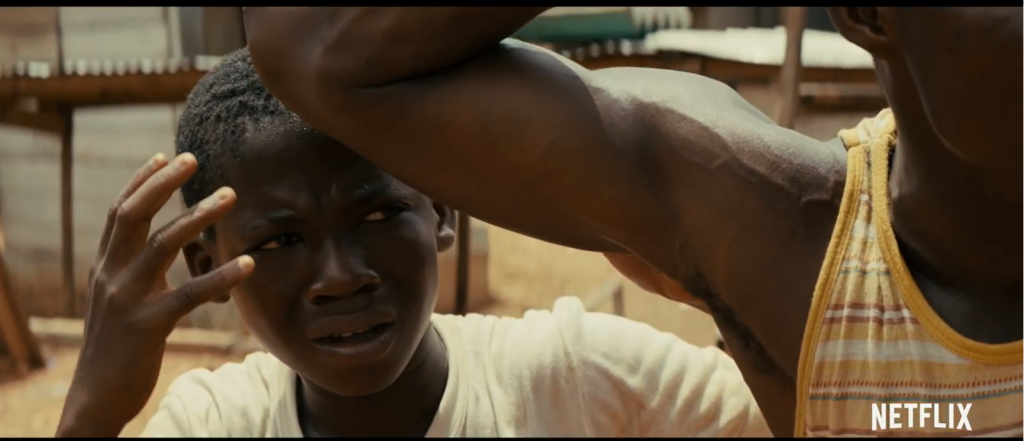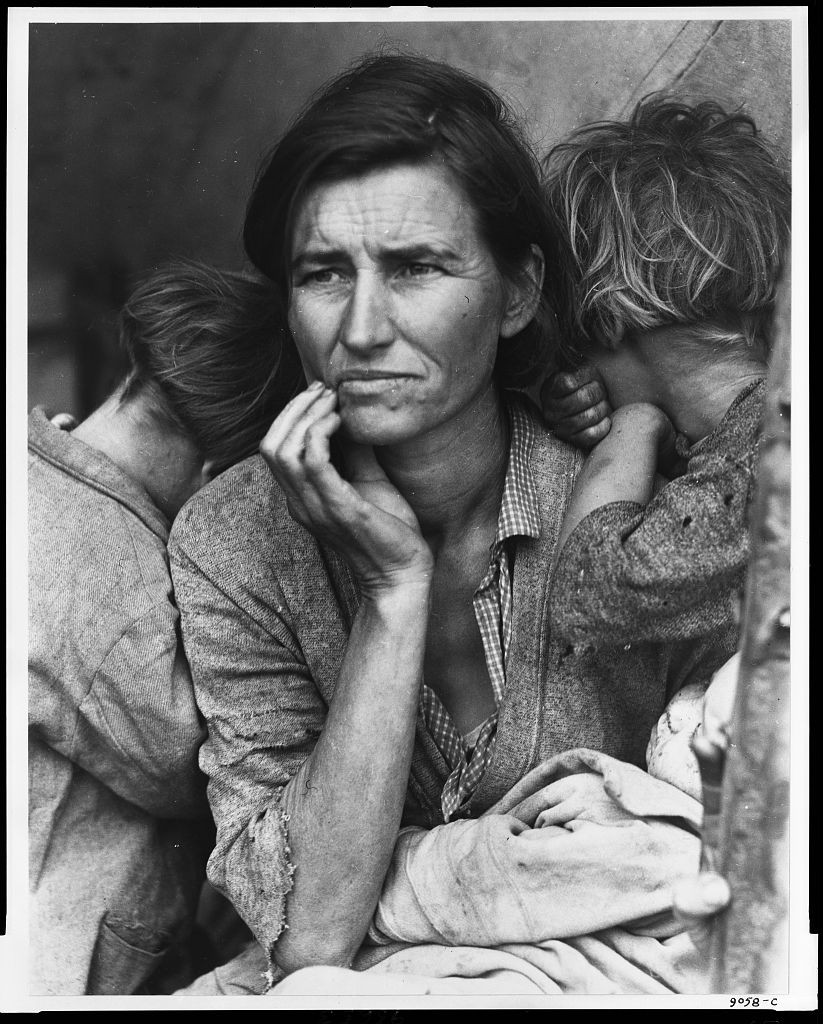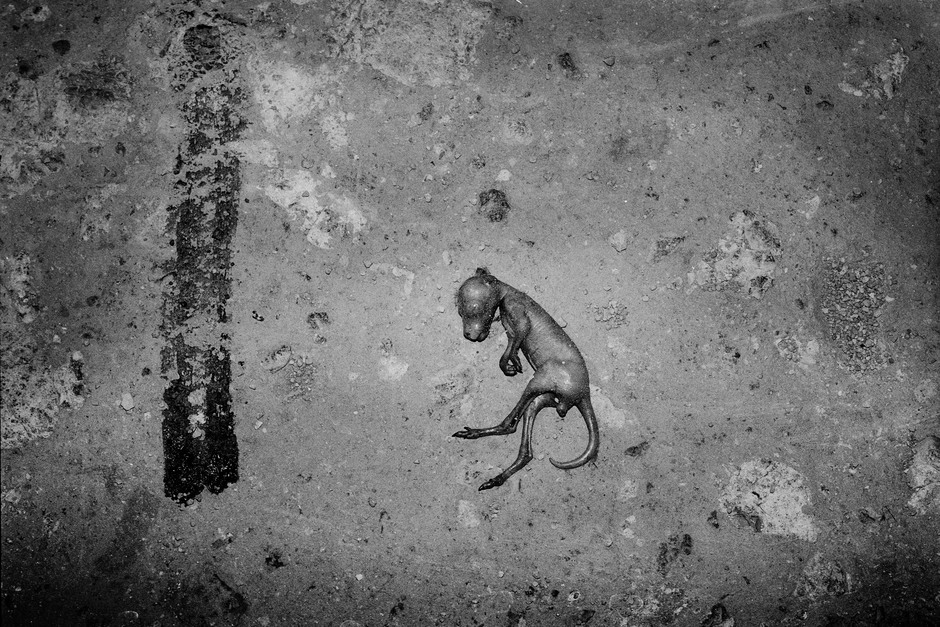For this exercise I have used three images. What I found interesting is that the strongest images I found were mostly negative emotions; fear, vulnerability and despair. I tried looking for more positive images and struggled to find them. I then looked at other blogs and realized that most other students had also found images that generate more negative emotions. Does this mean that it is easier to show a range of negative emotions visually?
Image 1- Taken from ‘Beast of No Nation’
This is a harrowing image, even if you have not seen the movie. The feeling one gets is of fear, fear for the boy and what is about to happen, which feels like a life threatening situation. There is a sense of mental/emotion struggle.

The boy is framed so that he is partially hidden by the man standing in front of him indicating that he is trying not to be seen. Although you are not able to see all of the man standing in the foreground, there is enough of him in view to realise that he has his hands on his head. This is the classic pose for someone who is in a surrendered position. Most likely he is being threatened by someone with a gun. This helps the viewer to understand that the boy is in a situation where he is being threated, that his life is possibly in danger and not just that he is looking at a scene that distress him. The boy’s hand coming up to his head could show either that he is in terrible distressed, but more likely that he is partially copying the man in front of him. The shot is a medium close up of the boy, allowing the viewer to see the fear in his eyes and the tension in his mouth. The background is hardly visible since the focus is completely on the emotion state of the boy.
Image taken from Beast of No Nation [feature film] Dir. Cary Funukaga. Princess Grace Foundation, The, Red Crown Productions, 2015, 137 min.
Image 2 – Migrant Woman (photograph by Dorothea Lange)
This iconic photograph was taken by Dorothea Lange as part of the US Farm Security Administration survey that was documenting rural conditions in the US in the mid-1930s. The feeling one gets from this image is of absolute despair and desperation. The sense of this woman having given up and just waiting for her future, having nothing left inside her to fight with. This remains for me one of the most powerful images I have ever seen.

This is a mid-shot, which allows the viewer to see the woman’s expression, but also to get a glimpse of her context. It is the context that is included in the frame that helps us to understand the tragedy of her situation – her worn, frayed and dirty clothes, the thinness of her arm. Her children are also in the frame, on either side of her even though they are looking away from the camera. The children looking away from the camera give the sense of their hopelessness but the way they are framed with their mother, helps the viewer to focus on the mother as it almost pushes her forward in the frame.
The woman’s face is positioned in the top-third and centre of the frame and it is clearly the focus of the image. She is looking out of the frame; she could be just hopelessly staring into the mid-distance. The shot is close enough to see the strain in almost everything in her face; her eyes, the lines around her eyes and the grimace around her mouth.
US Farm Security Administration Collection. Reproduction number: LC-USF34-9058-C (film negative) Caption: “Destitute peapickers in California; a 32 year old mother of seven children. February 1936.” (retouched version)
Image 3 – Foetal Kangaroo Roadkill (photograph by Trent Parke)
This is a very simple image but it conveys an awful sense of loss and the vulnerability of the young.

The framing puts the kangaroo foetus slightly right and below the centre of the frame. It does not respect the rule of thirds and as a result feels visually uneasy, which adds to the dis-ease one feels about the image. Instead of showing the foetus up close, which would only reveal some of the more gorgy detail, the foetus is small in the frame, conveying the sense of its size and aloneness. The fact that the mother has been left out of the frame adds to the vulnerability and tragedy of this little foetus – it didn’t even die near to its mother.
